[Chinese Culture Pickup] Born to the sea -Gu Quanzhou and Quanzhou
Author:Overseas Chinese University Time:2022.08.12

China has a long marine civilization and culture.
In July 2021, the "Quanzhou: Song and Yuan World Marine Business Center" was included in the World Heritage List. As an outstanding example of the East East Engine Port of the Asian Marine Trade Network, it showed the high prosperity of Asian marine trade from the 10th to 14th century AD. scene.
After becoming a world heritage land, people observe this "living" ancient city from a more macro perspective. This is not only a well -known overseas Chinese hometown, but also the "flow community" center formed by countless Chinese overseas expansion. It is a characteristic component of the "Maritime Silk Road".
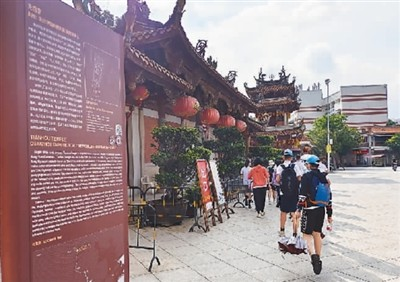
In July 2022, middle school students entered the inheritance point of Tianhou Palace in Quanzhou.
(Photo by Jiang Nan)
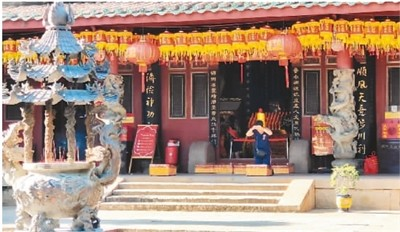
In the Tianhou Palace of Quanzhou, the customs of Pilgrim worship still continue.
(Photo by Jiang Nan)
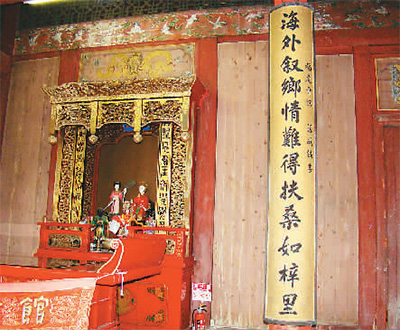
The Fujian Club in Nagasaki, Japan was founded in 1868.
The heavenly hall in the hall is also worshiped with Mazu. (Photo by Jiang Nan)
Quanzhou is my hometown.
From the sky to the city of Quanzhou, the west road of Quanzhou City is like a "bow", and the western section of the West Street is like a bow to shoot. This is the core area of Quanzhou Historical and Cultural City, which is surrounded by cultural relics and inheritance buildings.
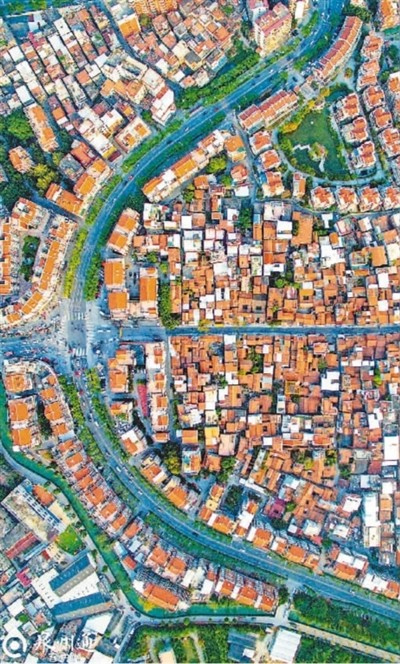
Picture source: Quanzhou Evening News
My great -grandfather followed his great -grandfather to Surabaya in Indonesia when he was young. When his grandfather was young, he was almost sent to Surabaya to go to his uncle to learn to do business, but coinciding with Taiwan's restoration, his grandfather chose to go to Taiwan as a teacher. Later, he would return to Quanzhou to continue to be a middle school history teacher. Decades later, I learned history like my grandfather. When I wrote a doctoral dissertation, I flipped through the information of Zhengshi, Nan'an, Quanzhou, and saw Zheng Chenggong's father Zheng Zhilong at the age of 18 to go to Xiangshan Australia (that is, Macau) to go to Huang Cheng, so I have a sense of acquaintance slightly -embarking on a road of survival of the sea when I was a teenager, which is about the only way for countless Quanzhou people for hundreds of years. This way of life born in Quanzhou is far longer and stable than other overseas Chinese hometown.
Since Quanzhou has become a port of the southern coast of China, the history of Quanzhou is no longer a local history. Since the Ming and Qing dynasties, the number and scope of the people's activities overseas are increasingly connected with the hometown of these travelers and have not been cut off. Members of the family may be recreated of the family; the original social relationships and social resources that have been extended to overseas. Therefore, those who happen overseas are part of Quanzhou history.
In the middle and late Qing Dynasty, people in Quanzhou can be divided into two parts: in place and overseas. Although the number of overseas Quanzhou people is quite considerable, the formed overseas communities are constantly flowing, but their social and economic life is connected with the local Quanzhou local. The public life of Quanzhou in modern times should actually count them. The history of Quanzhou would not be complete without them.
"Sea, the field of Fujian people." The formation of the tradition of the Quanzhou marine depends on the livelihood model of Quanzhou people and the historical heritage of the Minyue ethnic group.
The past and active embrace of the ocean, accompanied by the sea of Quanzhou and the sea, is precisely the epitome of marine civilization in the southeast of China.
Fujian Province has 3752 kilometers of coastline. Every spring and summer, the southwest season is blowing from the Indian Ocean and the South China Sea, and the northeast monsoon is blowing south in autumn and winter; the black tide on the north and the shore flowing south can help the ships that sail along the coastline. So Fujian, at the junction of the East China Sea and the South China Sea, became an excellent maritime transport transfer. As early as the Eastern Han Dynasty, the tribute from the seven counties from the Central South Peninsula, which was transferred from Fuzhou to the north from the sea.
The extended Wuyi Mountains in the northern Fujian not only blocked the cold wind southward in winter, left the elegance of "Wenling" to Quanzhou, but also hindered the footsteps from the north of the land from the north of the land. To the north to the north is the rolling hills and mountains, and the east to south is the vast sea. As long as there is a boat, you can go wherever you want. The long and twisted coastline of Quanzhou is distributed on the "Three Bays and Twelve Port". The navigation needle book "Shun Wind Send" used by Fujian sailors in the Ming Dynasty not only records the channels from Fujian to East Asia and Southeast Asian countries, but also records the channels between the Philippines and Japan and Southeast Asian countries. If it is said that on the Asia -Europe continent, the most mobility ethnic group is nomadic people, then the most mobility ethnic group is marine nation in the sea.
The first marine tradition of Quanzhou came from the Fujian Vietnamese people who were often known as the "people". "Shan Hai Jing · Oshi Southern Sutra" says "Fujian is in the sea". During the Ming Hongzhi period, the "Eight Fujian Tongzhi" quoted the old records: "There are seven types of islands in Fujian." The indigenous ethnic groups in Fujian are Baiyue Island with "boats as cars and horses". The survivors of Min and Vietnam have left Fujian's unobstructed tradition of marine civilization. They are the best sailors in the surrounding waters of China. The Western Jin "Wu Du Fu" has the word "Equipment and Master from Fujian and Panyu"; they are excellent shipbuilders. The blessing boat with strong anti -storm ability surpasses the Arabian ship and is the prototype of Zheng Hebao boat in the future; they are also excellent adventurers. As early as the eighth year of Tang Kaiyuan, Quanzhou had a navigator Lin Ye "tried to Bo Ni (that is, Brunei), the exchanges are beneficial. The coastal family members have obeyed, attracting the boat ", and so far left the famous" forestry "; they were later the guardians of the coastline. When he was the first coastal defense system, he once "islanders, egg households, Jiazong, and Yu Ding as soldiers", so that some people went ashore to become the guards of the guards. The rise of Quanzhou Port in the Song and Yuan dynasties and the continuation of its later marine traditions, the survivors of Fujian and Vietnam have contributed.
Quanzhou has a natural condition suitable for maritime activities, and at the same time, it is an area that is not suitable for agriculture. The people living on this land must move towards the ocean in order to survive and develop. The agricultural immigrants from the two Jin Dynasty to the Tang and Song dynasties were the main developers of the Quanzhou Plain. They brought advanced agricultural technology and built a large number of water conservancy projects to enable this former southern smoke to trade overseas trade. Production with sufficient products.
In 1974, an ocean cargo ship built in the Song Dynasty was unearthed in the Port of Quanzhou Bay. This is the only ancient ocean sea ship that has been returned from overseas and unearthed from overseas. (Picture source: Quanzhou Overseas Traffic History Museum)

In the core area of the ancient city of Quanzhou today, some of the Han Dynasty were still soaked under the water. This is Jinjiang's entrance to Haikou, and salt water meets with fresh water. The first settlement of the northern agricultural immigration in the northern agricultural immigrants in Quanzhou is the Nine -day Mountains of Fengzhou, which is even more upstream. In addition to crocodiles and poisonous snakes, barren land and constantly invading sea tide are the biggest challenges facing agricultural immigrants.
There are many Ming and Qing genealogy preserved in the coastal plains of Quanzhou. These genealogy often uses "硗" to describe the barrenness of the local soil. From the side of the character, people can also feel this plain with only 345 square kilometers. It has the fourth largest river in Fujian Province, but has no chance to become a fertile Delta. Not only that, from time to time, the tide of salt halogen also poured into the fields of the ancestors of the ancestors. Once a tide of astronomy, the results of hard work may be used to be oh. In order to accumulate fine streams and rainwater to irrigate the fields that are irrigated, from Tang to Song, the Jinjiang coastal plains have built a total of 125 Pauda fields to compete with the sea. However, the growth rate of the population still exceeds the carrying capacity of the agricultural output of Quanzhou Plain. During the Yuanfeng period of the Northern Song Dynasty, Quanzhou and Fuzhou were tied with Fujian's densely populated areas. During the Southern Song Dynasty, only Quanzhou City was claimed to have "500,000 tooth". The local ability has lost its ability to be self -sufficient and needs to be transferred from outside the territory. In order to live, agricultural immigrants learned the beach coating and offshore fishing of local residents, used seafood to exchange corn, and were subsequently involved in the production chain of overseas trade.
Compared with Guangzhou Port, which has a long history of foreign countries, there seems to be no advantage on the surface of Quanzhou Port. However, Fujian is relatively developed earlier and more comprehensive than Guangdong. Throughout the Northern Song Dynasty, the number of scholars in Fujian Dengke was more than ten times that of Guangdong, which reflected the level of economic development to a certain extent. Quanzhou and his hinterland produce a variety of commodities for overseas trade, but for Guangzhou Port, many need to be transferred from foreign provinces to obtain, which undoubtedly increases the trade costs of Guangzhou Port. In Quanzhou, in order to adapt to marine livelihood models, the land for planting grain is changed to planting crops, such as litchi, longan, tea, sugar cane and kapok; Bigong Zhejiang Longquan and Jiangxi Jingdezhen. Zhou Daguan, the messenger of the Yuan Dynasty (that is, Cambodia), also met the celadon produced by Quanzhou in the True Metropolitan Angkor at the time. At the same time, the bridge that is conducive to water and land transfer is also built in large quantities. In the Song Dynasty, there were 18 bridges in Fuzhou, but Quanzhou built 115. Jinjiang County, which was only in the core of the plain, built 43 bridges.
The marine livelihood model has created the maritime tradition of Quanzhou. When overseas trade is not restricted by state, the tradition of marine business has been developed and deepened.
In 1087 AD, the Northern Song Dynasty set up a city shipping department in Quanzhou, and Quanzhou Assassin Tonggang entered her golden age. In a "Map of the Catalonian World" painted in 1375, the Port Port was recorded as "Zayton", which is the name of her famous navigation history. In this city wall, even in the city of Fuzhou, the capital of Fuzhou, businessmen from distant countries stay in "Fangfang" and "Jubao Street", or at the Monania Temple, Christian Nestoli, churches and Brahmanism in Brahmanism The temple and even participated in the imperial examinations. They are officially business in Quanzhou and shared the peak glory with Xing Tongcheng. After archeological discovery, the Arabs, who did not know where, was finally buried in the cemetery of Brunei with the title of "Dandelion with Song Quanzhou". More descendants of Arab businessmen still settle in the countryside of the suburbs after the decline of Tonggang Port, and marry and reproduce with the locals. The family departments recorded on the tombstone of the famous thinker of the Ming Dynasty, the family, which proves that the family and the descendants of the Arab businessman Jin, Pu's, and Ding's all have marriage relationships.
The golden age of Xingtonggang deepened the symbiotic relationship between the local society and marine livelihood model of Quanzhou. Local society has been accustomed to business activities since then, and is used to interacting with different people; the people are also accustomed to always have far -sized recipes or hearings in their lives. In addition to the best oysters in Quanzhou Bay at the entrance of Jinjiang, Quanzhou Jinjiang, it is also known for its oyster shells. It is only the large oyster shells they use. The East African Coast returned to Quanzhou Port with the same blessing ship hundreds of years ago. When Zheng Zhilong presided over the repair of the Kaiyuan Temple, he used the stone components of the Hindu Temple, and the gods of Mani and Hindu entered the local belief system and were worshiped as local gods. The wives of the wives of the wetto -in -Mapo of the Monuine Buddha and the Xingji Pavilion of Chidian were worshiped by the people as the Guanyin Bodhisattva. As the messenger of the Ceylon in China settled in Quanzhou in the early Ming Dynasty, the dog god Picher also became the sacrifice god of the Baizhu Temple of Shop Temple.
Hindu Shizhu (Photo by Jiang Nan) on the back of the Great Hall of Kaiyuan Temple in Quanzhou
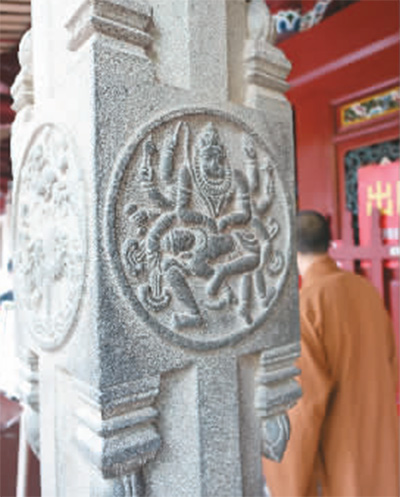
The tradition of the marine tradition has created the liquidity of the Quanzhou regional society. The historical boundary of Quanzhou continues to expand with the footsteps of its social members, forming a "flow community" that spread overseas. In the hundreds of years after the decline of the Port of Tongtong, the footprints of Quanzhou people spread throughout the sea and Southeast Asian waters. Wealth from overseas supports the social economy of Quanzhou. Therefore, Quanzhou after the Song and Yuan Dynasties did not decline, and the maritime tradition of Quanzhou did not interrupt.
In the eighth year of the Ming Dynasty (AD 1472), the Shipai Department of Fujian moved from Quanzhou to Fuzhou, and Quanzhou lost its status of legal port. However, the port is not the core of the Quanzhou marine tradition. The oldest mosque in China -Quanzhou Pure Temple was built from 1009 to 1019 AD. This proves from a side to the Arab community with a certain scale in Quanzhou at that time. Marine trade is the prerequisite for the formation of these diverse social features. "If you don't come, I will go to the mountains." The core of the marine tradition is the liquidity of the wind and waves. After the decline of Quanzhou Port, the Hai Shang Group of Quanzhou people developed. They walked at commercial ports at home and abroad. From Nagasaki to Asuka (that is, the current Thailand Grand City), they all have their figures. At that time, the famous representative was Zheng Zhilong. He was able to use a variety of languages to active in Fujian, Macau, Taiwan and Japan. His son, Zheng Cheng, returned from Japan to Shijing Town, Quanzhou at the age of 7. Later, he founded the sea, land and five commercial banks involving the entire sea area around China.
After 500 years after the status of the East Greater Port lost in Quanzhou Port, Quanzhou people completed the maritime tradition with the maritime adventure again and again. The living habits and knowledge system brought by the marine livelihood model have long been integrated into all aspects of folk life. The sea is dangerous at the sea, and the future of good and bad makes cross -sea living people often superstitious to the blessing of the gods. The commercial network of Quanzhou people also requires a credit system to maintain. So the "god" became a witness, and worshiping the gods became a long tradition. In the long period of time to the Qing Dynasty for one or two hundred years, Quanzhou merchants in Nagasaki, Japan, and Fuzhou Business Gang, Sanjiang (Zhejiang, Jiangsu, Jiangxi) business gangs in Japan to hire the Mazu Festival and maintain the Chinese righteous mound of the Moshi Mosque. Until now, the old lady of Quanzhou I met around me may not be literate. Maybe I never heard of "London" and "New York", but she knows that Yangon is in Myanmar and Surabaya in Indonesia; although she has never studied In English, I do n’t know how the word "Outside" is read and write in English, but when she is playing with the four -color card of southern Fujian, if she is wrong, she will blurt the "Ors" annoyed. When the older generation of Quanzhou is making breakfast, he will naturally add chocolate bar from Nanyang to the egg oatmeal and cook for breakfast. This is actually a Mexican cuisine transferred by the Philippines.
A "mini" king boat exhibited in Doumei Palace in Shishi Xiangzhi Town, Quanzhou.
(Photo by Jiang Nan)
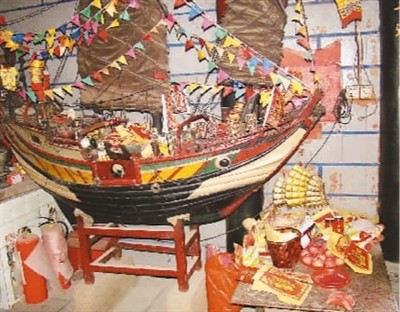
It is often said that Quanzhou is a "alive" ancient city. It has not solidified in the dust of history, and is always full of hustle and bustle. Although the ancient customs customs of the Shipworth of the City had long become a Temple of Marshal, which worshiped the Marshal of the Drama, the Temple of Marshal, Quanzhou people moved the "Langjun Society" of Nanyin to the ports of Nanyang; although the port has no longer traded the South Island spices, Quanzhou people added Nanyang taste to steak and sand tea noodles. The marine civilization, which is born in folk culture and lifestyle, has given Quanzhou's long -term openness and tolerance. People from Quanzhou can continue to find new ways from the sea. The largest source.
Source | People's Daily Overseas Edition
Author | Jiang Nan (College of International Relations of Huaqiao University)
Edit | Fan Qiqi Zhang Jiamei
School Audit | He Yini
Responsible editor 丨 Sun Xiaoyu Hou Bin
Produced 丨 Zhang Luoying

- END -
The story of the version of the version 丨 Jin Yirui: The 10,000 -piece celadon screen fan turns gorgeously once

Zhejiang News Customer Reporter Zhu Dawen Trainee Tu Jiayu Correspondent Chen Yany...
Holding a cup of tea in your hand, you have the beauty of the entire world

Mimi always produces in the eyes of knowing how to appreciate. Tea Mei is in the e...